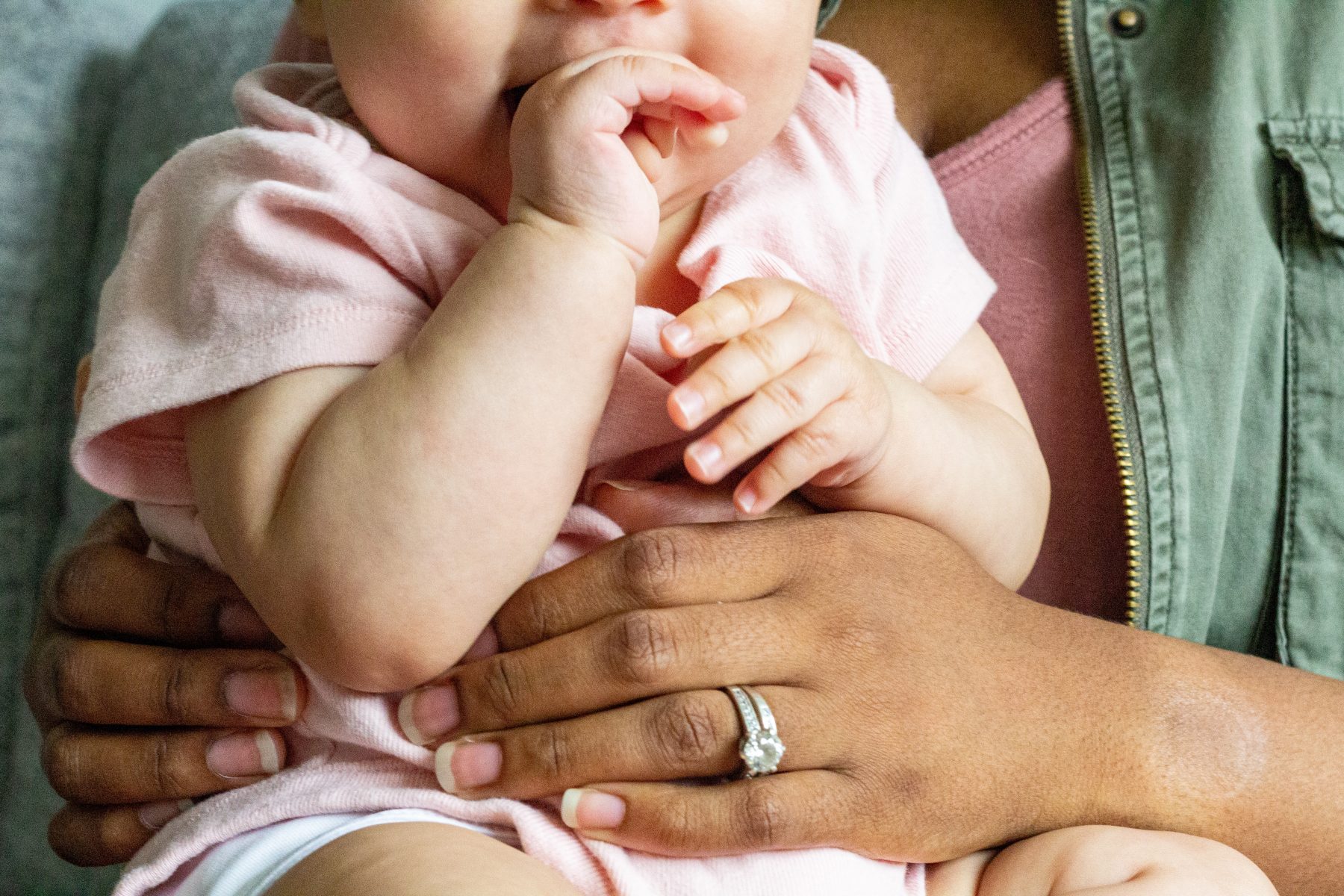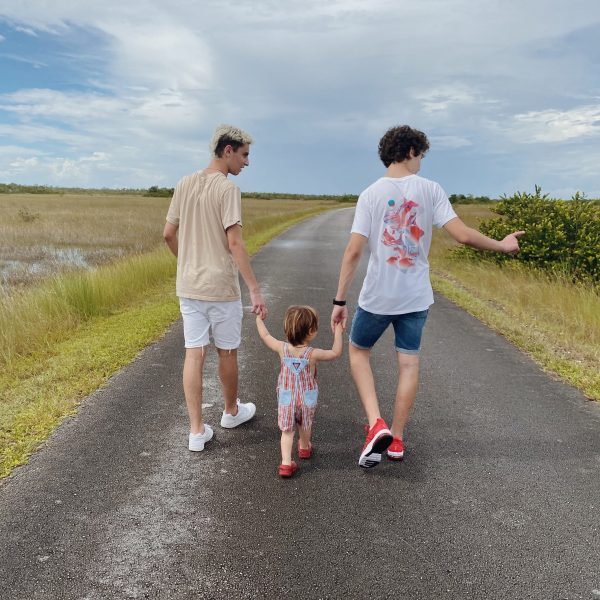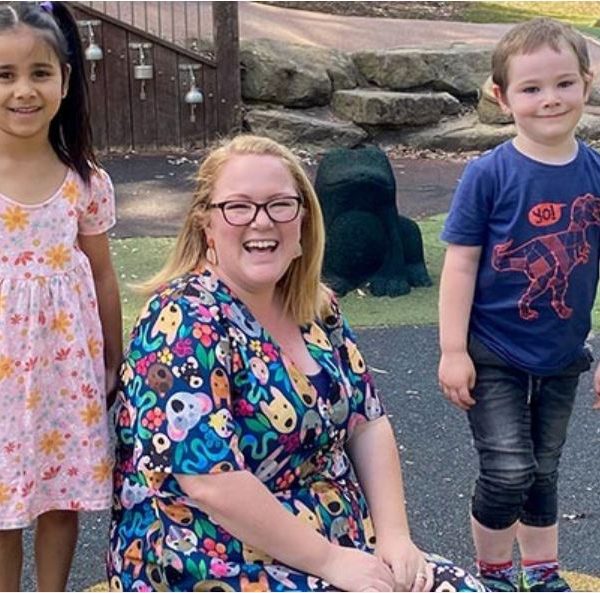The beginning of a new year marks a time when we welcome children and families back to our early childhood classrooms (or foyers in the case of our Covid policies). This year I wanted to start off by writing about the possibilities of re-imagining the routine of orientation and position it more as a relationship that communicates a heartfelt welcome – a practice that invites people with both heart and head, not just policy and procedure.
We know that first connections matter. They set the tone and climate moving forward.

I’ve noticed the desensitisation that can happen in early childhood services at this time of year, particularly if our own emotional capacity is not readily available for children and families. The heartfelt welcome might be intended and something I am sure we all agree on but in practice it can be reduced to a procedure, a tuning out or, as I have observed, a team or educator ‘going through the motions’. It is time to reflect inwardly and think deeply about our practice of welcome, and not simply pass it by because we have done it a thousand times before. Until we make the unconscious conscious, we will always default to what we have always done.
Although one may have enrolled, greeted and orientated children a thousand times before, I wonder if the conversation of connection and welcome can be framed through a different lens? Sure, we have policy and procedure but creating the conditions for a positive tone, atmosphere and connection are more about how we show up in relationship with others. This requires us to observe and talk about our practice of welcome with each other in ways that allow us to smooth the rough edges that sometimes show up.
Exploring our strengths and challenges as educators opens the space for shared dialogue and learning and an improved experience for children and families. Perhaps a gentle shift in focus could make the difference between cultivating meaningful partnerships with families, moving away from the safety of limited participation and surface exchanges. I wonder if we might be brave enough to invite our colleague to observe our practice and invite a conversation that might build a deeper awareness of how we show up with others?
I want to draw on a word that has meaning for me and relate it to this context of welcome. This word has led me to reflect more deeply and to welcome with open eyes and heart. I invite you to wrestle with this word too and be open to how it might shape or challenge your thinking and practice.
Manaakitanga
This word is a te reo Māori word: Manaakitanga
– Pronounced: ma-naa-key-tung-a
This Māori principle, it’s really more than a word, can be defined as: extending aroha (love), hospitality, kindness, generosity and support – the process of showing respect, generosity and care for others.
When I think about this principle, and the possible invitation these words offer in the context of welcoming new children and families, I have visions of an environment where we sit down for a cuppa, engage in a chat that is not driven by the enrolment form and spend time getting to know each other.
I think it is so important to bring yourself to the welcome process, not just deliver the procedure for enrolment. I believe this means being tuned in and asking questions off script and sharing a bit about yourself. This includes tapping into things parents notice or comment on so you can elaborate about pedagogy and practice in meaningful ways. It’s also about being sensitive to occasion. Nurturing relationships don’t happen because we follow a procedure, they happen because we bring ourselves wholeheartedly to the conversation and relationship. Part of that is about intuition too. Here are some questions to support your own reflection:
– How does generosity show up through my own practice?
– How does the environment invite opportunities for slow time with parents?
– What actions and behaviours show hospitality?
– How might we extend kindness into our welcome?
– What cultural practices could be more visible in our welcome for our community?
A personal story …
Many moons ago I used to work at an indoor children’s playground in New Zealand called Lollipops Playland – I was 18 years young. I know you know the places – huge climbing nets, ball pools, really noisy and great for wet weather days to burn the energy. We used to offer birthday parties of course and had several party rooms available. Saturday was our busiest which often meant processing 15 parties in a day! We had a 45 minute window for the party + 15 minutes to clean up. So yes, procedures mattered, and I quickly mastered these so I could turn my attention to making the experience really meaningful.
It was really important that every child and family felt like their party was the first party of the day! So even on the 15th birthday party I would make time to chat with the child, spend time mingling with the family and learn something special about them that could be connected to that group. It might have only been two lots of 5 minutes done slowly. My boss at the time was super motivational around all this and our attention to relationships reflected in the returning customers. It also nurtured in me what I knew was so important – people first.
Now I was 18 back then but I think this encompasses the idea of manaakitanga quite beautifully. To see the people and not the process through prioritising your generosity, kindness and care – for me this was in my conversation, body language, questions and the time taken with families. When you adopt the practice of being present with people, even despite busyness and having many things to do, it will always shine through in your manner and attention. It is possible to be slow even when we are busy, or perhaps better said we can rush slowly.
What the practice of manaakitanga might look like?
Here are some personal thoughts from my own practice over the years – I hope they spark some thinking for you.
-
Organise time to prioritise conversations – ask meaningful genuine questions, make eye contact, be responsive and offer reassurance where you notice a child or family’s uncertainty. This can mean you are still in ratio and within the team, but you are allocated to welcoming a family and spending time with them talking through the program in action and involving them.
Educators are confident about what to say and how to communicate with families so they are an active participant in the orientation process
-
Listen with an open heart to what children ask about, need to hold or have close, or what they say when they arrive and leave – this offers an insight into what matters to them and how we can better connect and establish strong relationships. We reflect back what we hear from children to better understand and adapt to what is needed in each given situation.
Instead of using blanket statements like ‘they had a good day’, we share specific, meaningful stories to give insight into the process of settling into a new setting. We are real and reassuring. We recognise the importance of these face to face times and do not rely on e-relationships via online platforms to establish this.
-
Arrange a space that invites families to sit and be welcomed– have a cuppa and chat in an informal and relaxing context. This space could reflect artefacts as visual narratives to your philosophy and your image of the child that spark conversations.
Filling in paperwork happens after the first point of contact.
-
I have always loved to invite each child to share a photo book (Under 3 years of age) of images that reflect their important people, places and things. They can carry it with them and it invites me and others into their life outside of the service. For children over 3 I do the same thing and call it a ‘chat book’– an exercise book with images or short examples of people, places and things of importance. We share stories together as we all get to know one another in the early days.
We go beyond a family photo displayed on a wall and connect with the child’s significant people, places and things.
-
When children are not settling as well as they could be there are no delays in connecting with familiesto discuss further. I often share photos of myself and the team with the child in a small photo book and this can be shared at home – so the reverse of the above strategy. More specific approaches can be developed with families who prioritise the child’s belonging and honour their right to have their needs met in a way that suits them – such as a more regular communication system until the child settles.
We acknowledge and honour children’s right to feel connected and heard. While settling, leaving a child to cry and saying they’ll be okay is not acceptable practice.
-
Teaching teams have regular professional learning to inform their capacity to understand, value and articulate how we form meaningful connections with children and families. Formal programs such as Circle of Security or primary caregiving models can be part of your centre’s specific approach and philosophy. This enables educators to be confident at communicating with families and reassuring them about the important process of developing belonging and trust.
Families are supported to understand why their child is settling the way they are and what to expect in the process. Educators speak up confidently with professional insight that reassures families about the process of settling their child.
Manaakitanga is a concept and principle rich with depth. Seemingly simple on the surface, we might look past its significance for our practice. To build a culture of generosity and hospitality in the way we show up and engage during our orientation permeates through the micro practices nurtured in each educator. When these practices are woven together it demonstrates strength in upholding a strong image of the child and family. It also oozes with what I see as a heartfelt welcome.
Perhaps it might be time to draw ourselves back to the conversation of a welcome and what this looks and feels like in your own practice or setting?
What does a heartfelt welcome mean for you as an educator and what could it mean this year for your community of learners?


















